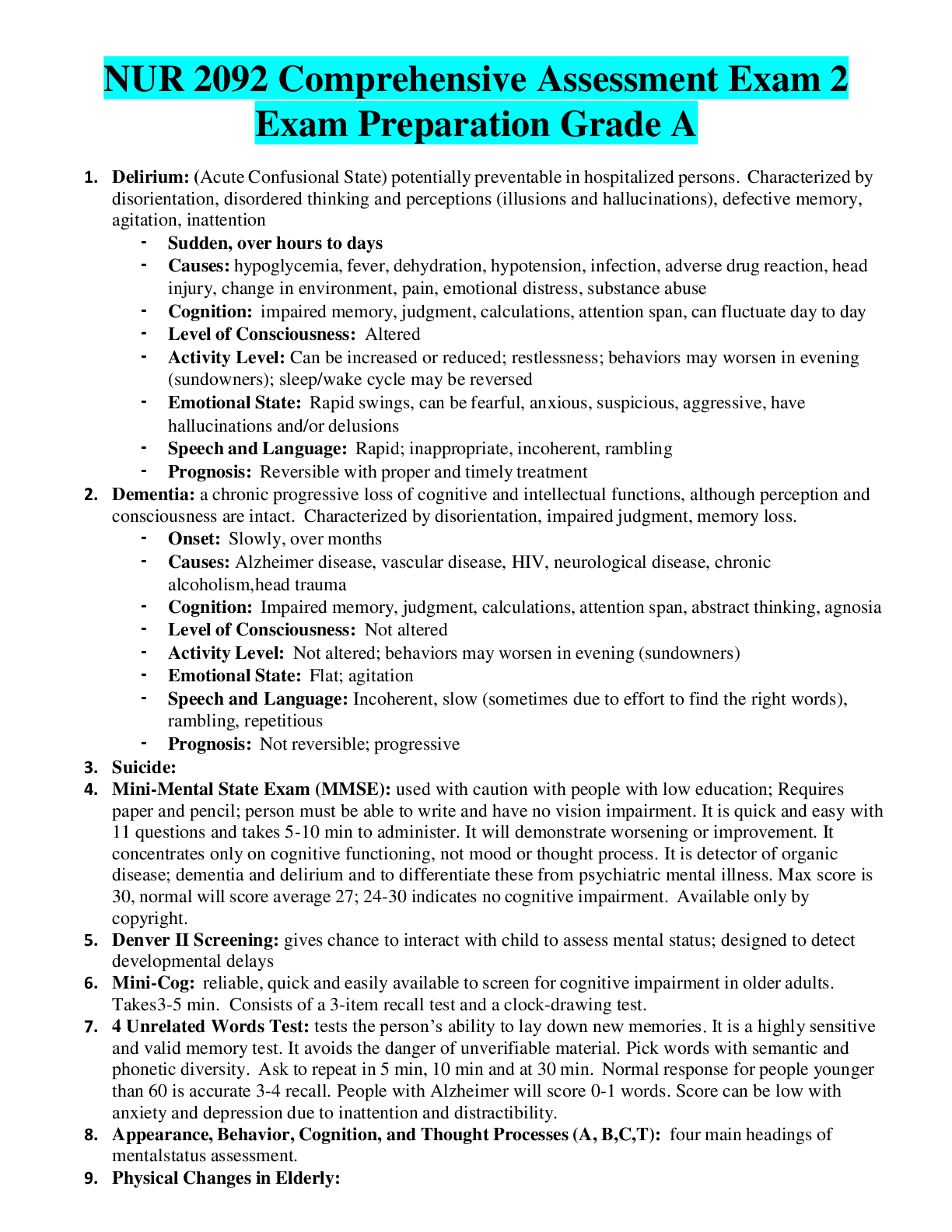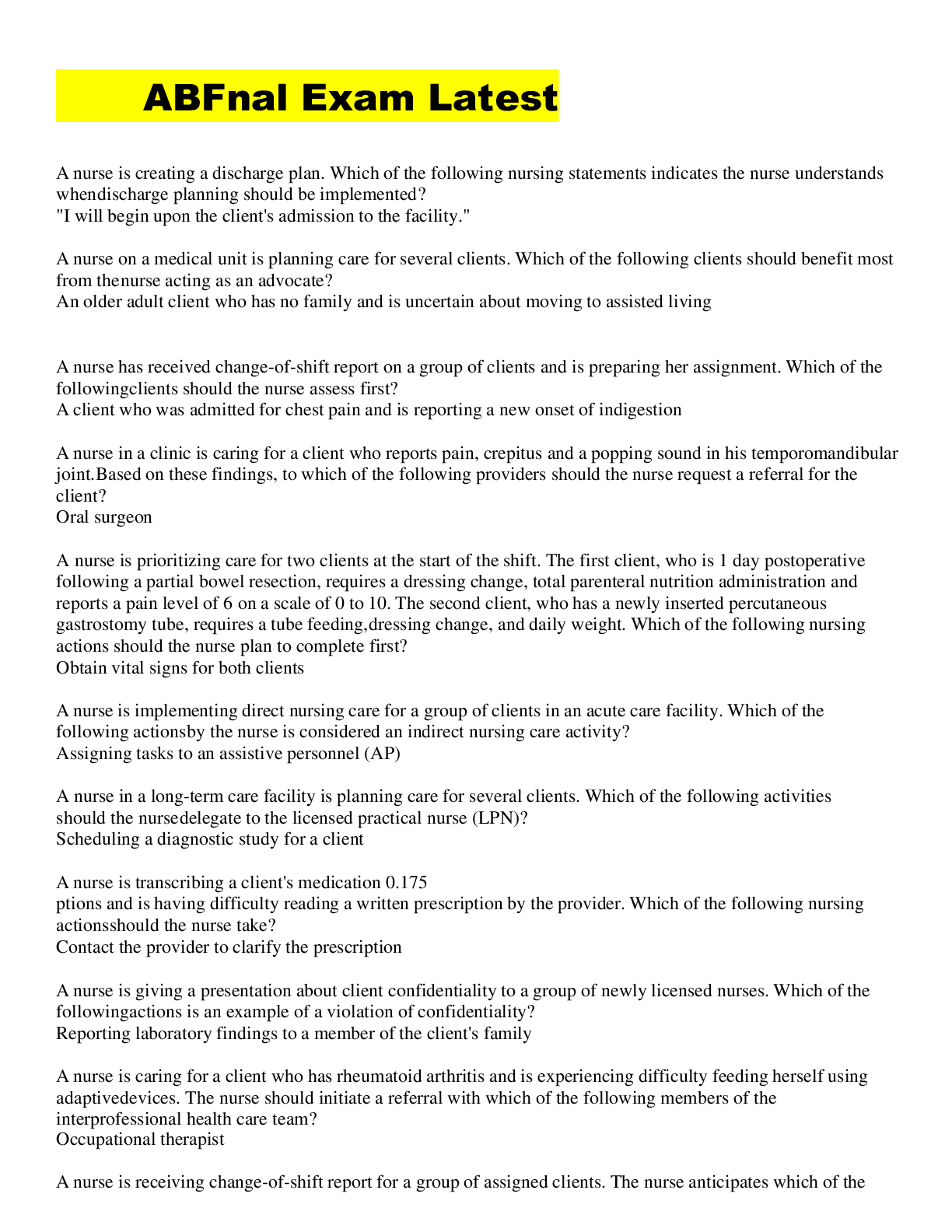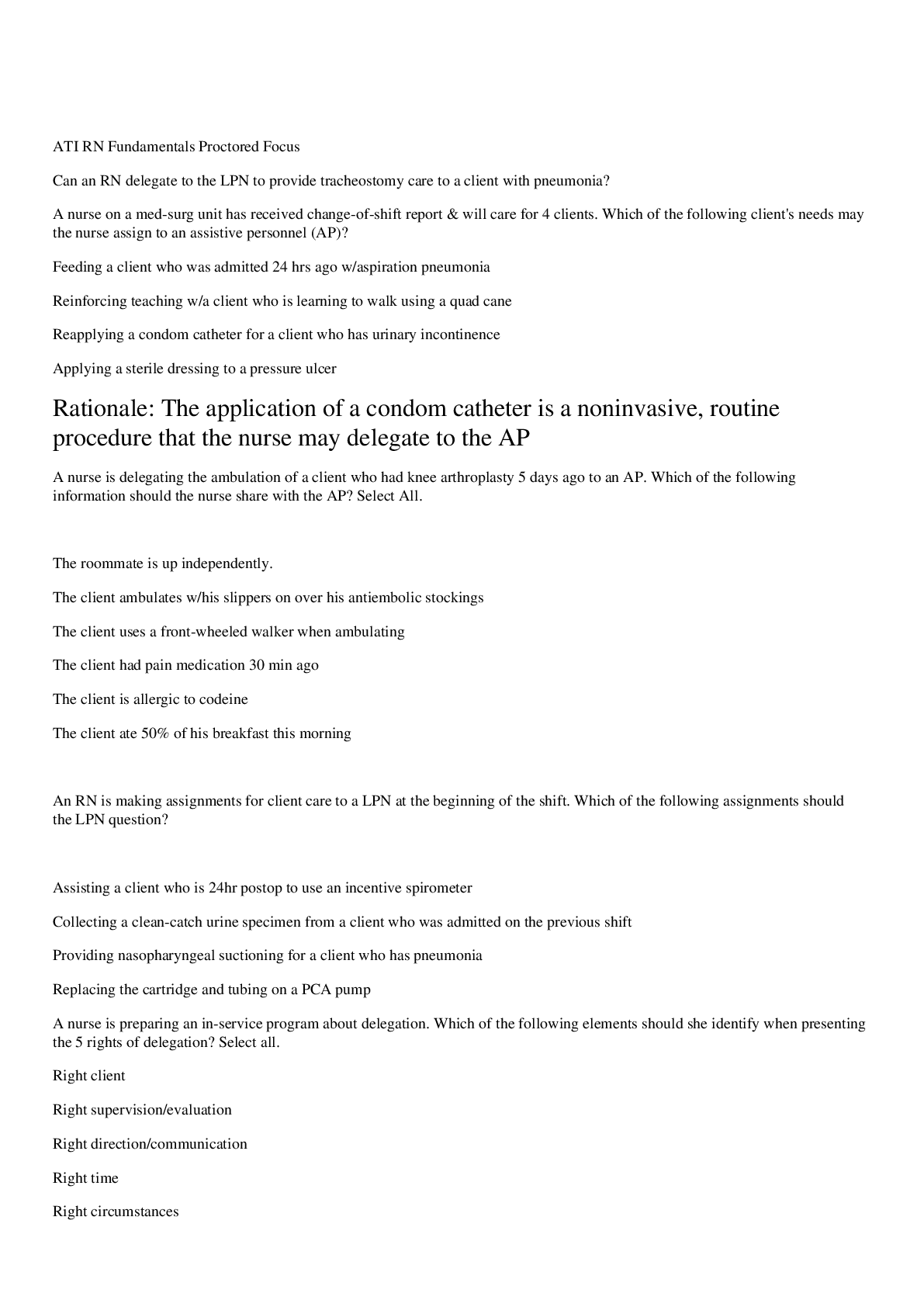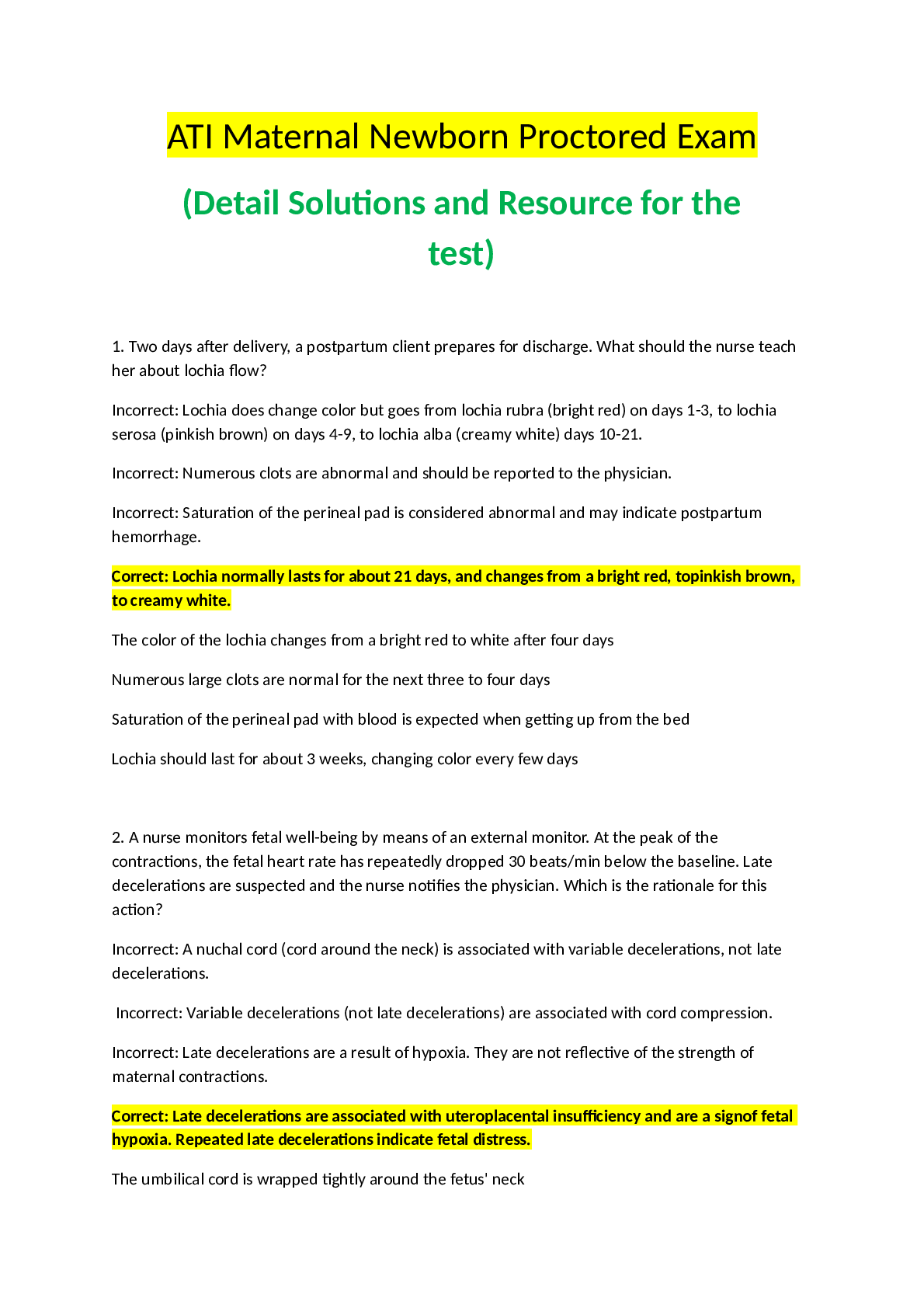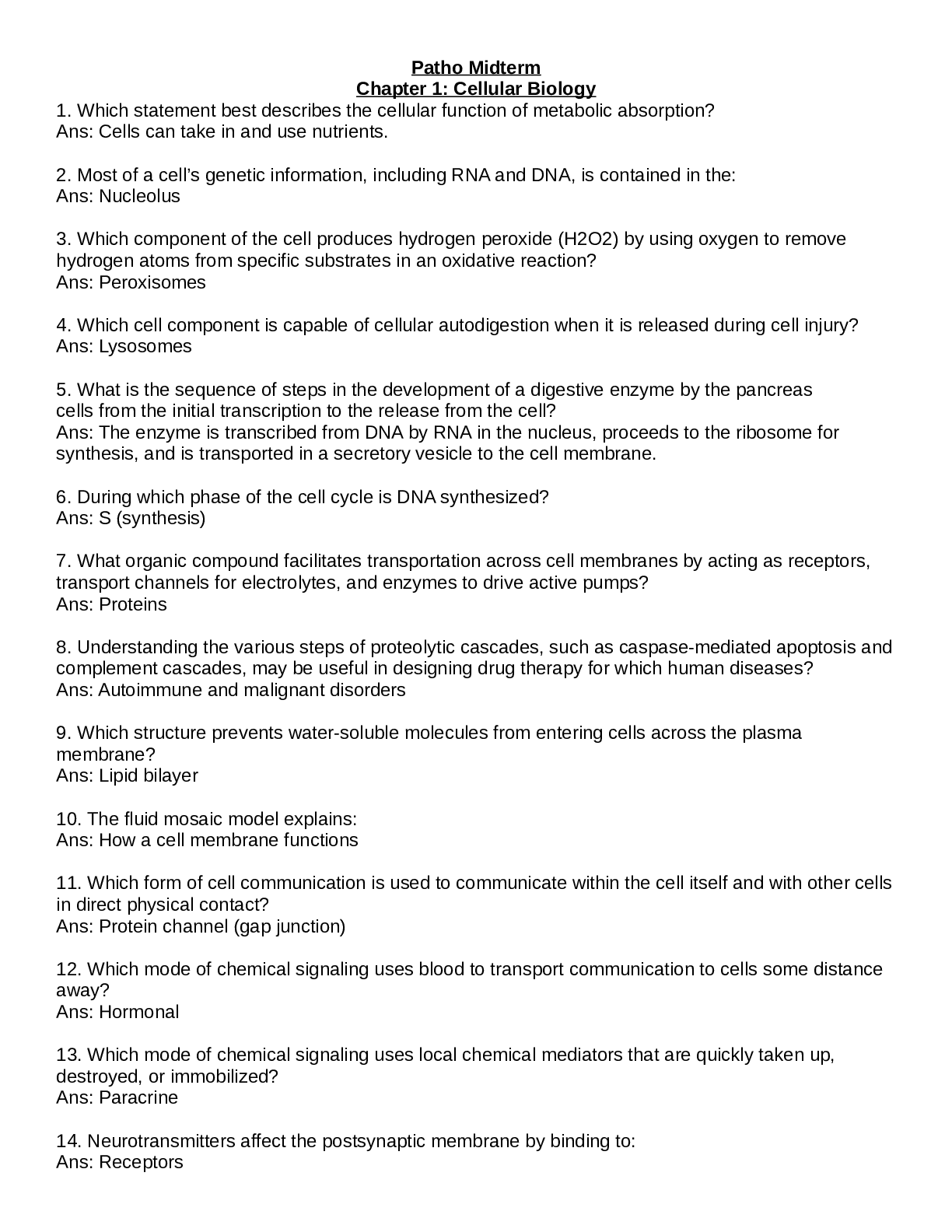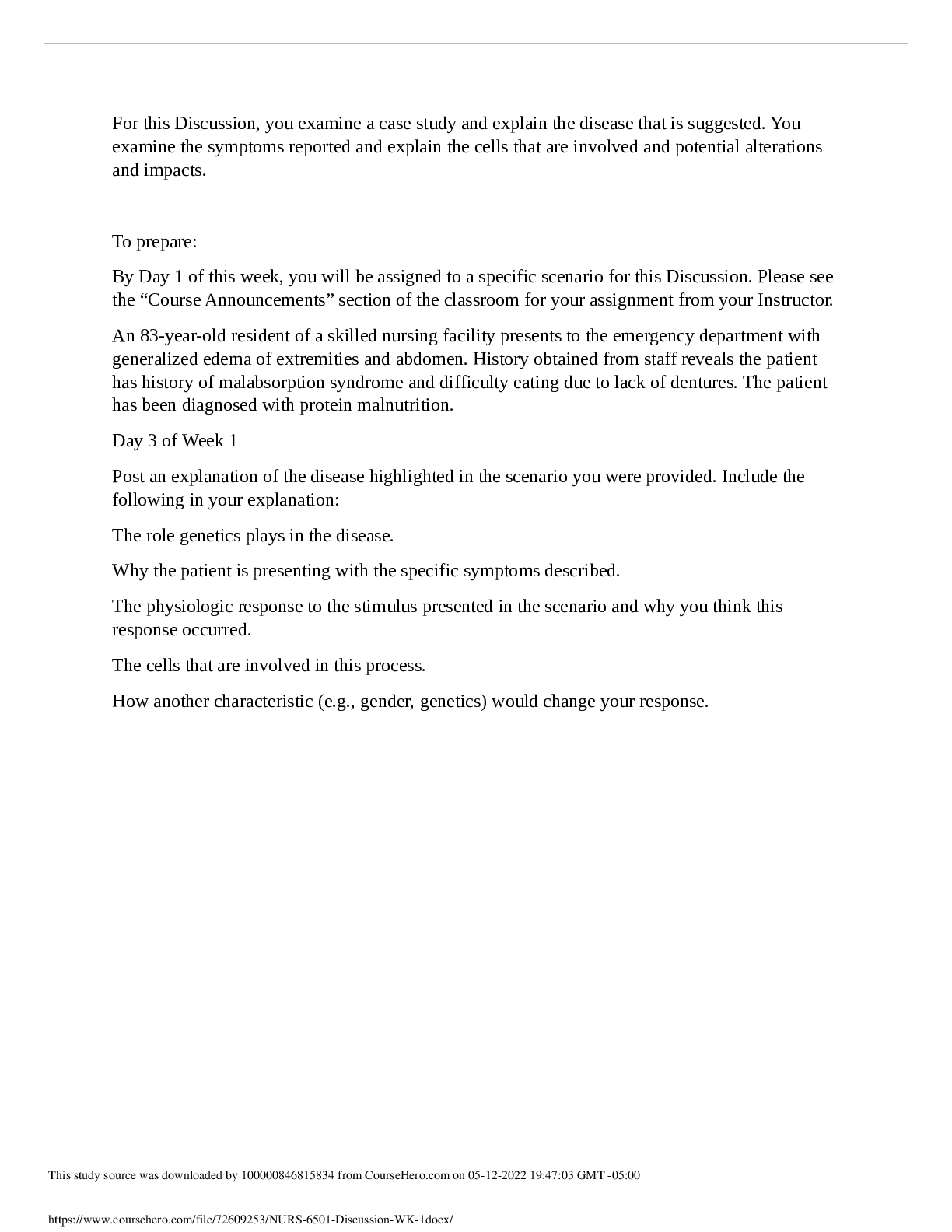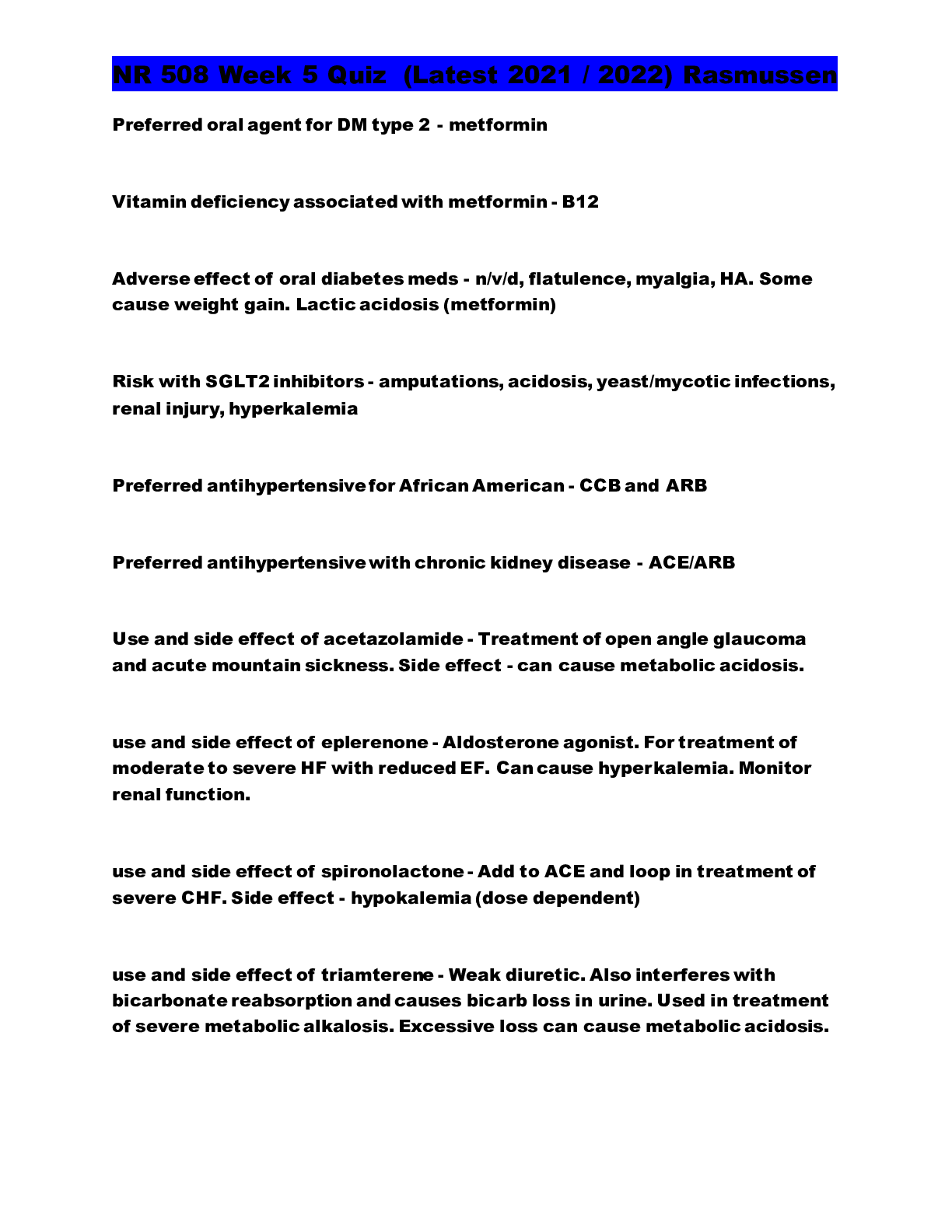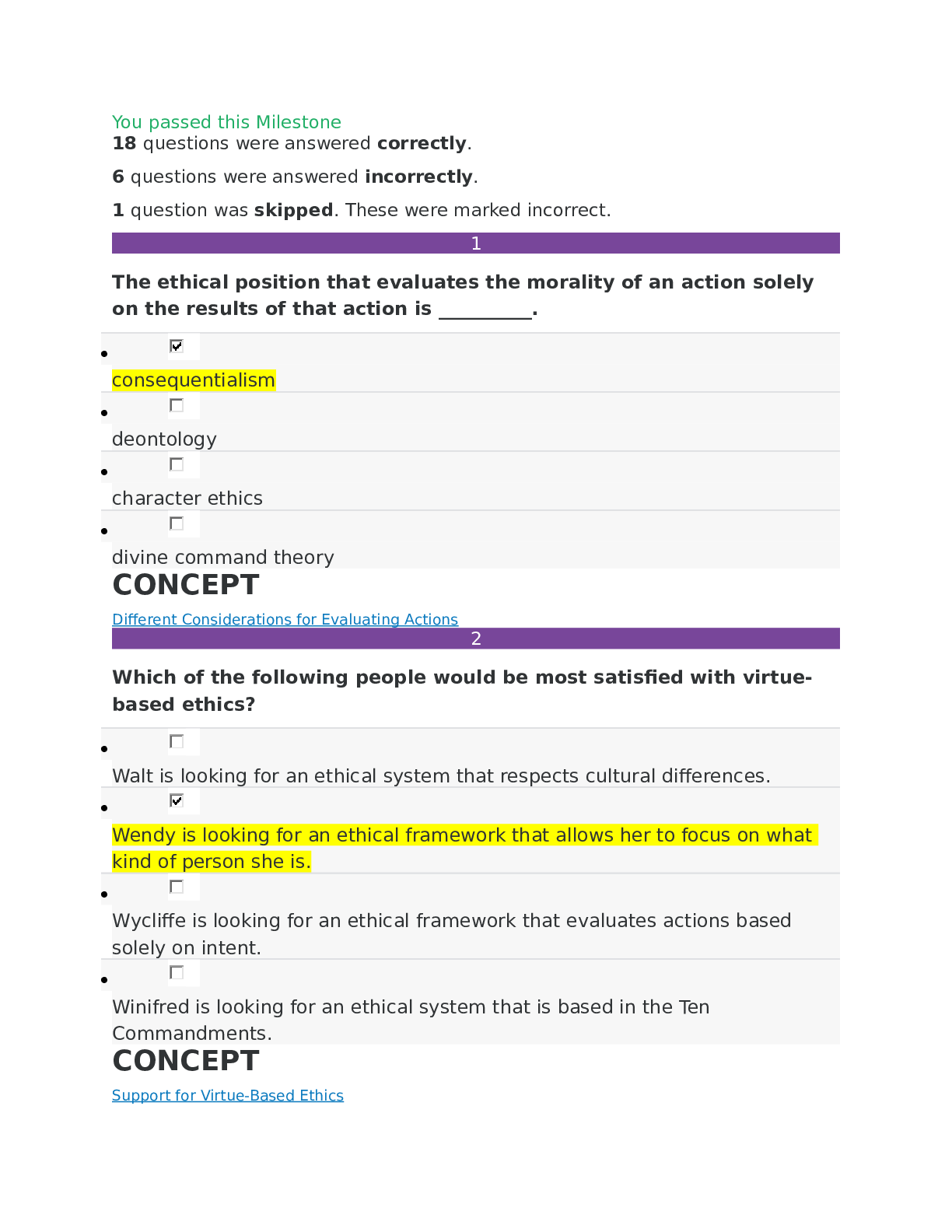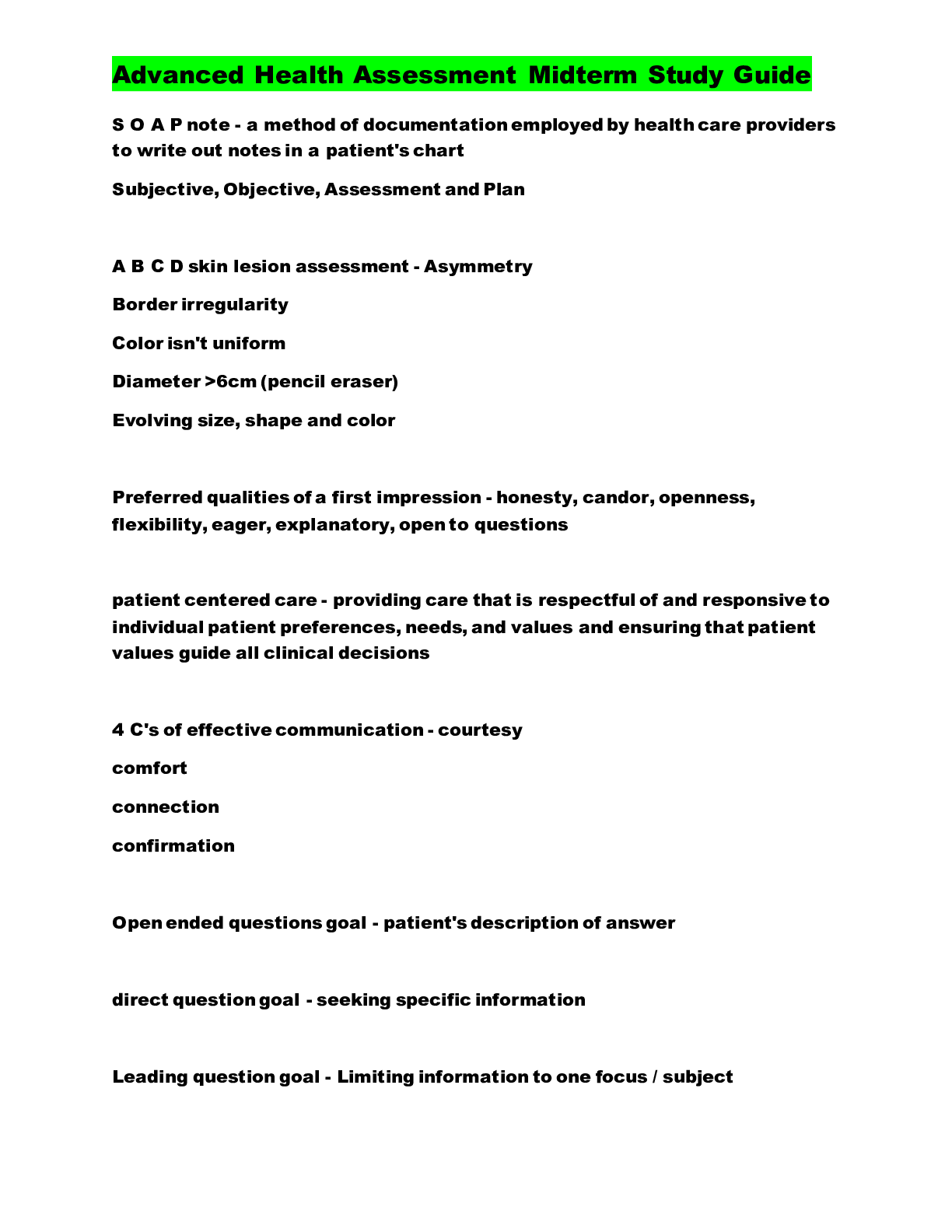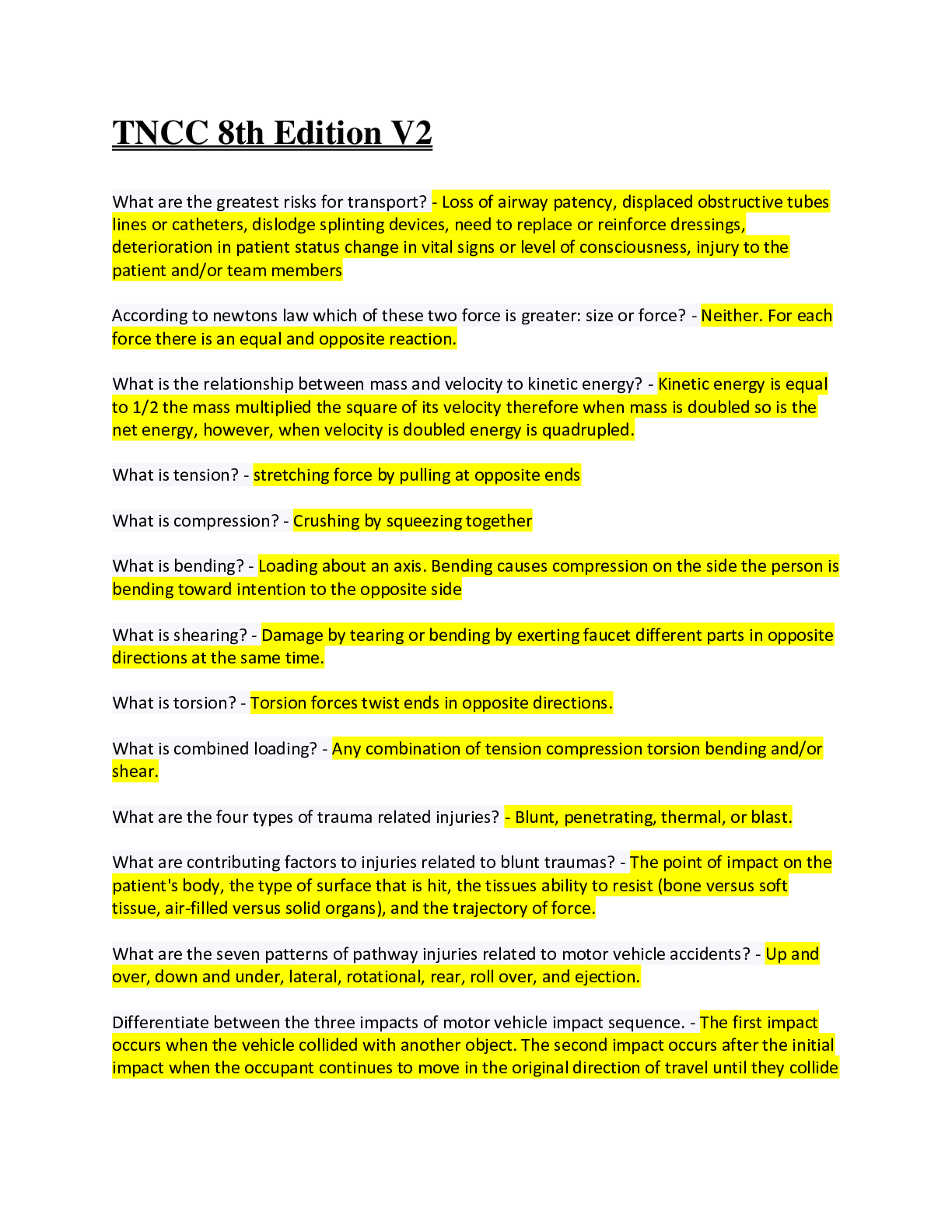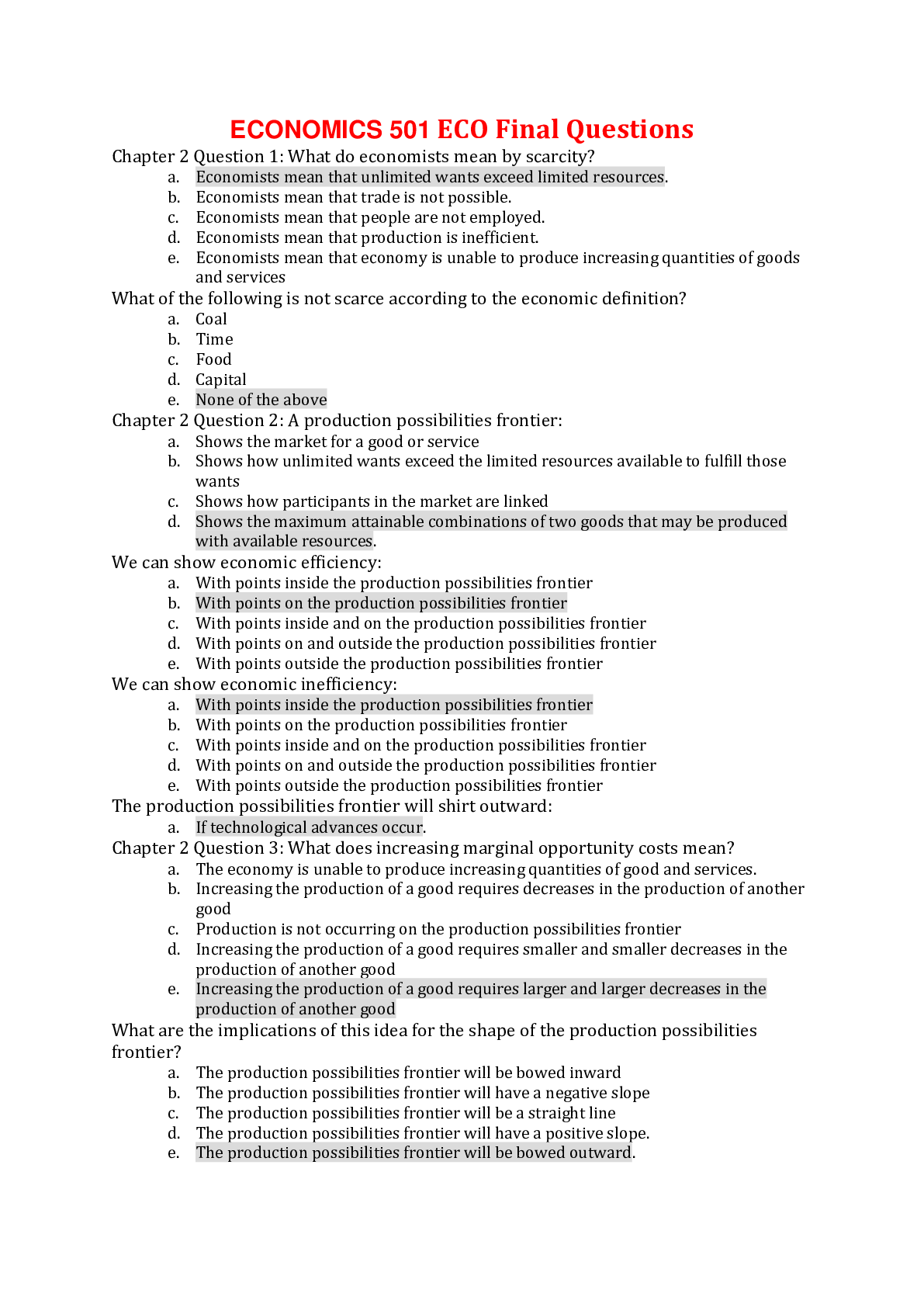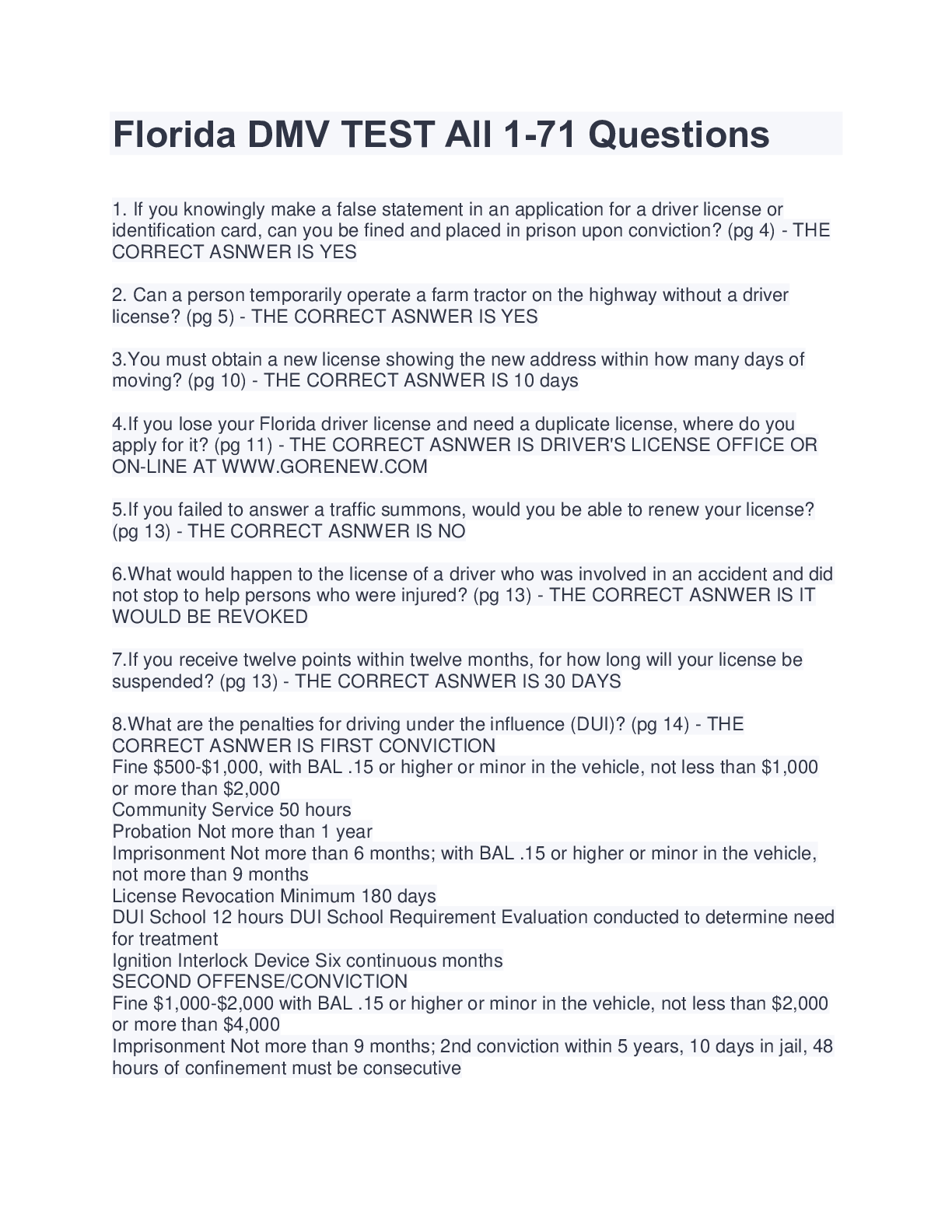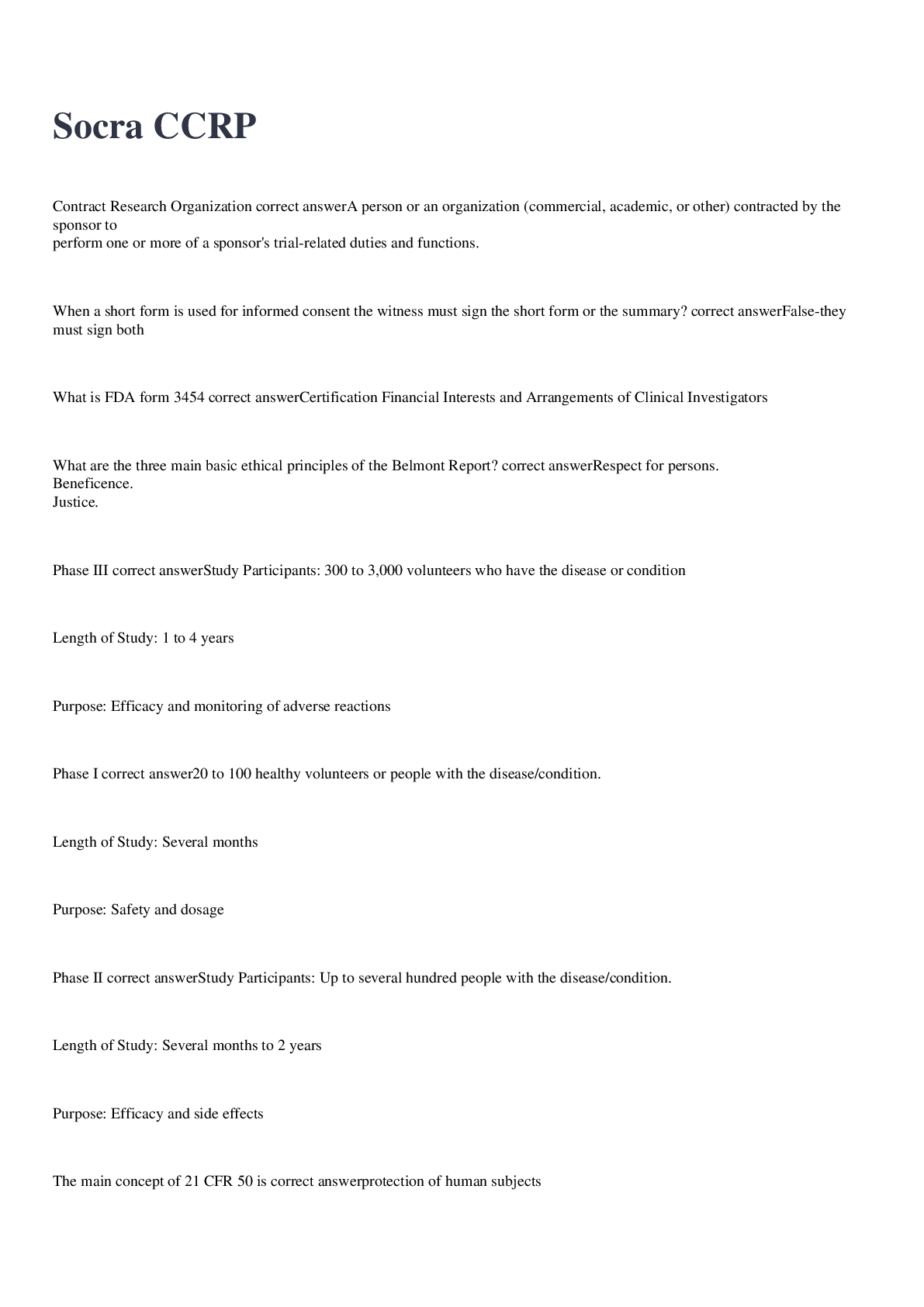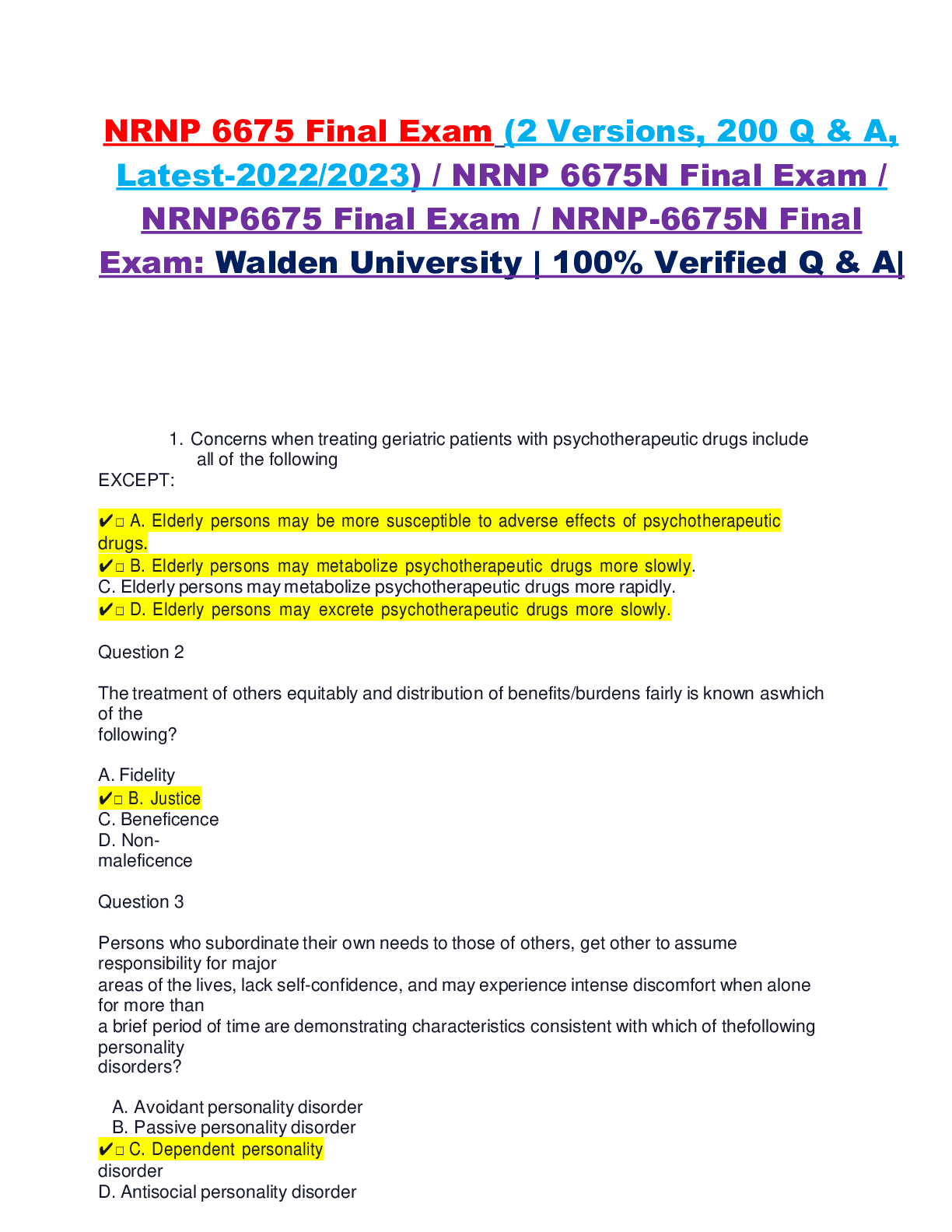HESI EXIT COMPREHENSIVE REVIEW A
Document Content and Description Below
1. The nurse is correct in withholding an older adult client's dose of nifedipine if which assessment finding is obtained? A. Blood pressure of 90/56 mm Hg B. Apical pulse rate of 68 beats/min C. ... Potassium level of 3.3 mEq/L D. Urine output of 200 mL in 4 hours Rationale: Nifedipine is a calcium channel blocker that causes a decrease in blood pressure. It should be withheld if the blood pressure is lowered, and 90/56 mm Hg is a low blood pressure for an adult male. A pulse rate <60 beats/min is an indication to withhold the drug. A potassium level of 3.3 mEq/L is low (normal, 3.5 to 5.0 mEq/L), but this finding does not affect the administration of Procardia. Urine output of more than 30 mL/hr, or 120 mL in 4 hours, is normal. Although a 200-mL output in 4 hours is slightly less than normal and warrants follow-up, it is not an indication to withhold a nifedipine (Procardia) dose. 2. Until the census on the obstetrics (OB) unit increases, an unlicensed assistive personnel (UAP) who usually works in labor and delivery and the newborn nursery is assigned to work on the postoperative unit. Which client would be best for the charge nurse to assign to this UAP? A. An adolescent who was readmitted to the hospital because of a postoperative infection B. A woman with a new colostomy who requires discharge teaching C. A woman who had a hip replacement and may be transferred to the home care unitD. A man who had a cholecystectomy and currently has a nasogastric tube set to intermittent suction Rationale: A hip replacement is considered a clean case, and transferring the client to another unit is likely to involve physically moving the client and her belongings. The charge nurse will be responsible for providing a report to the home care unit if the transfer occurs. The adolescent client is infected, and an employee who works on an OB unit should be assigned to clean cases in case the employee is required to return to the OB unit. This requires the skills of a registered nurse (RN) to do discharge teaching and provide emotional support. This may require skills beyond the level of this UAP. 3. A very busy hospital unit has had several discharges and the census is unusually low. What is the best way for the charge nurse to use the time of the nursing staff? A. Encourage staff to participate in online inservice education. B. Assign staff to make sure that all equipment is thoroughly cleaned. C. Ask which staff members would like to go home for the remainder of the day. D. Notify the supervisor that the staff needs additional assignments. Rationale: Online educational programs are available around the clock, so staff can engage in continuing education programs when the opportunity arises, such as during periods of low census. Option B is not the responsibility of the nursing staff. Option C is not the best use of staff and does notuse the extra time provided by the low census. The charge nurse should use the time to improve the unit, and requesting additional assignments is not necessary. 4. When the administration at a large urban medical center decides to establish a unit to care for clients with infectious diseases, such as ebola and the avian flu, several employees express fear related to caring for these clients. When choosing staff to work on this unit, which action is best for the nurse-manager to take? A. Make it clear that no one who is afraid to care for clients with rare disorders will be permitted to work on the unit. B. Conduct an education program about infectious diseases and then assess the staff's willingness to work with these clients. C. Introduce the staff to the family of a client who has been treated for SARS and ask the staff to share their fears with this family. D. Assign staff based on the needs of the unit, providing peer counseling for those staff members who express fear. Rationale: Fear is often related to a lack of knowledge and an education program about the relevant disorders would be appropriate, but after the education program, the nursing staff should be reassessed regarding their willingness to work with these clients. Option A is too authoritarian and does not permit education to play a role in reducing fears. Option C is likely to be intrusive to the family member. Arbitrary staffing without education does not reduce staff fears, even with the provision of peer counseling.5. The nurse is planning a community teaching program regarding the use of folic acid to prevent neural tube birth defects. Which community group is likely to benefit most from this program? A. Parents of children with spina bifida B. High school girls in a health class C. Class of people interested in having children D. Postpartum women attending a baby care class Rationale: Folic acid is needed early in pregnancy to prevent neural tube defects; the group most likely to be considering pregnancy is option C. Parents with children who already have a neural tube defect such as spina bifida are not as invested in the content as option C. High school age students may have interest in the topic but as a group are less likely to anticipate the likelihood that problems could occur in their lives than option C. Option D may be interested if planning future pregnancies, but have higher learning priorities during the postpartum period. 6. Staff on a cardiac unit consists of an RN, two practical nurses (PNs), and one UAP. Team 1's assignment includes two clients who are both 1 day postangioplasty and two clients with unstable angina. Team 2's assignment includes all stable clients, but two clients are bedridden and incontinent. Which staffing plan represents the best use of available staff? A. Team 1: RN team leader, PN; team 2: PN team leader, UAP B. Team 1: RN team leader, UAP; team 2: PN team leader, PN C. Team 1: PN team leader, PN; team 2: RN team leader, UAPD. Team 1: PN team leader, UAP; team 2: RN team leader, PN Rationale: Team 1 includes high-risk clients who require a higher level of assessment and decision making, which should be provided by an RN and PN. Team 2 has stable clients at lower risk than those on team 1. Although two clients on team 2 require frequent care, the care is routine and predictable in nature and can be managed by the PN and UAP. Options B, C, and D do not use the expertise of the nursing staff for the high-risk clients. 7. A male client with Parkinson disease is prescribed the antiparkinsonian agent amantadine HCl. Which action should the nurse take? A. Encourage foods high in vitamin B6 such as meat or liver. B. Teach client to change positions slowly. C. Instruct client to take at the same time as prescribed beta blocker. D. Notify client that development of a rash is a common side effect. Rationale: Amantadine can cause postural hypotension, so sudden position changes should be avoided. Options A and C are contraindicated with this drug, and option D is a sign of a possible allergic reaction, not a common side effect.8. A client tells the nurse that he is suffering from insomnia. Which information is most important for the nurse to obtain? A. The client's usual sleeping pattern B. Whether the client smokes C. How much liquid the client consumes before bedtime D. The amount of caffeine that the client consumes during the day Rationale: The first thing to determine is the client's usual sleeping pattern and how it has changed to become what the client describes as insomnia. Options B, C, and D provide additional information after option A is ascertained. 9. A client has been on a mechanical ventilator for several days. What should the nurse use to document and record this client's respirations? A. The respiratory settings on the ventilator B. Only the client's spontaneous respirations C. The ventilator-assisted respirations minus the client's independent breaths D. The ventilator setting for respiratory rate and the client-initiated respirations Rationale: The nurse should count the client's respirations and document both the respiratory rate set by the ventilator and the client's independent respiratory rate. Never rely strictly on option A. Although the client's spontaneous breaths will be shallow and machine-assisted breaths will be deep, it is important to record machine-assisted breaths as well as the client's spontaneous breaths to get an overall respiratory picture of the client [Show More]
Last updated: 1 month ago
Preview 1 out of 62 pages
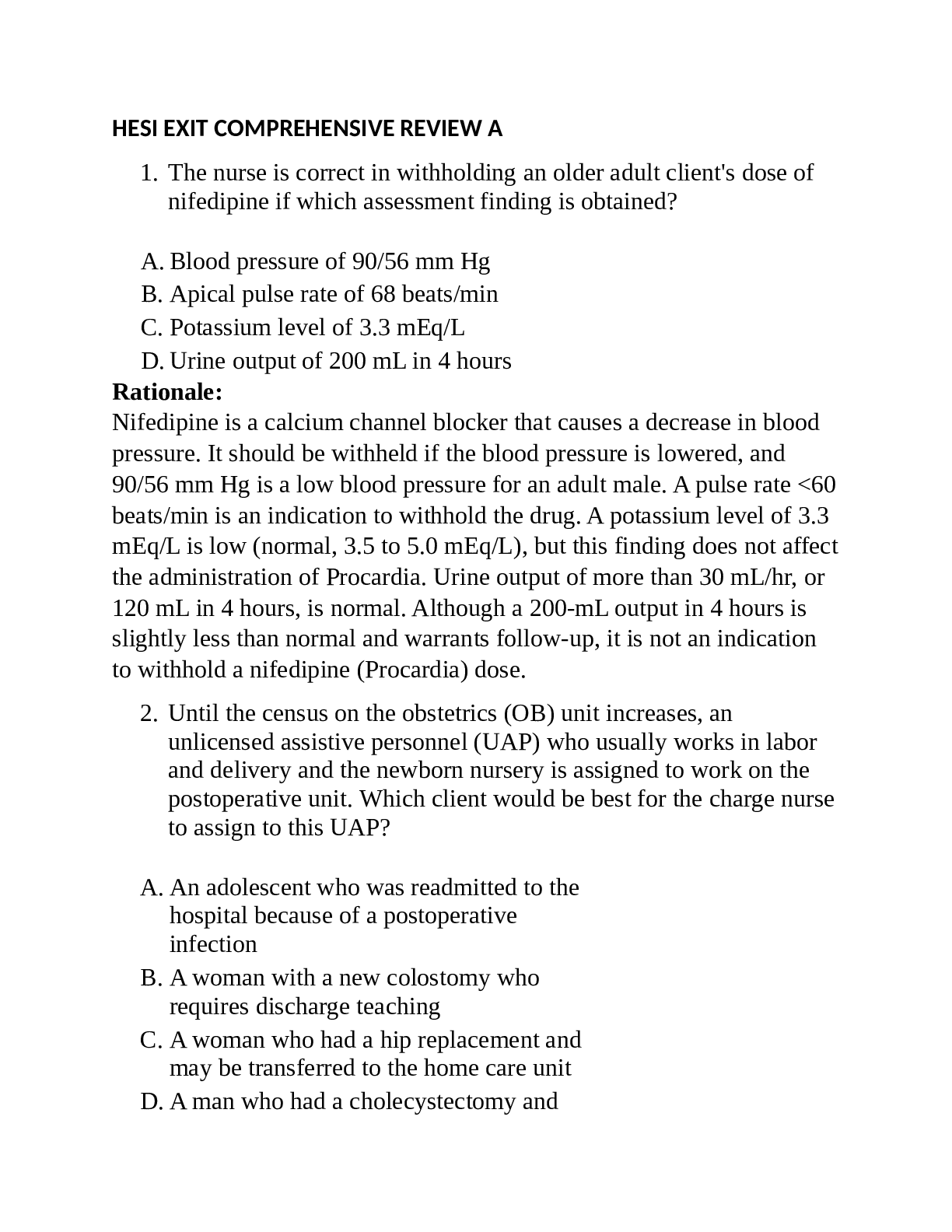
Reviews( 0 )
Document information
Connected school, study & course
About the document
Uploaded On
Feb 17, 2021
Number of pages
62
Written in
Additional information
This document has been written for:
Uploaded
Feb 17, 2021
Downloads
1
Views
124

